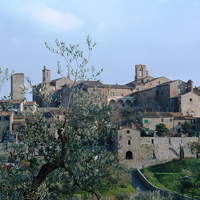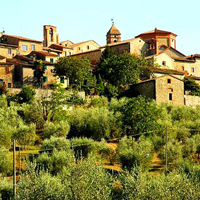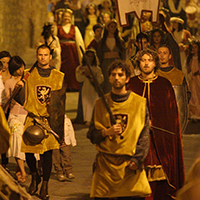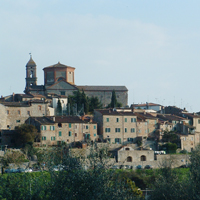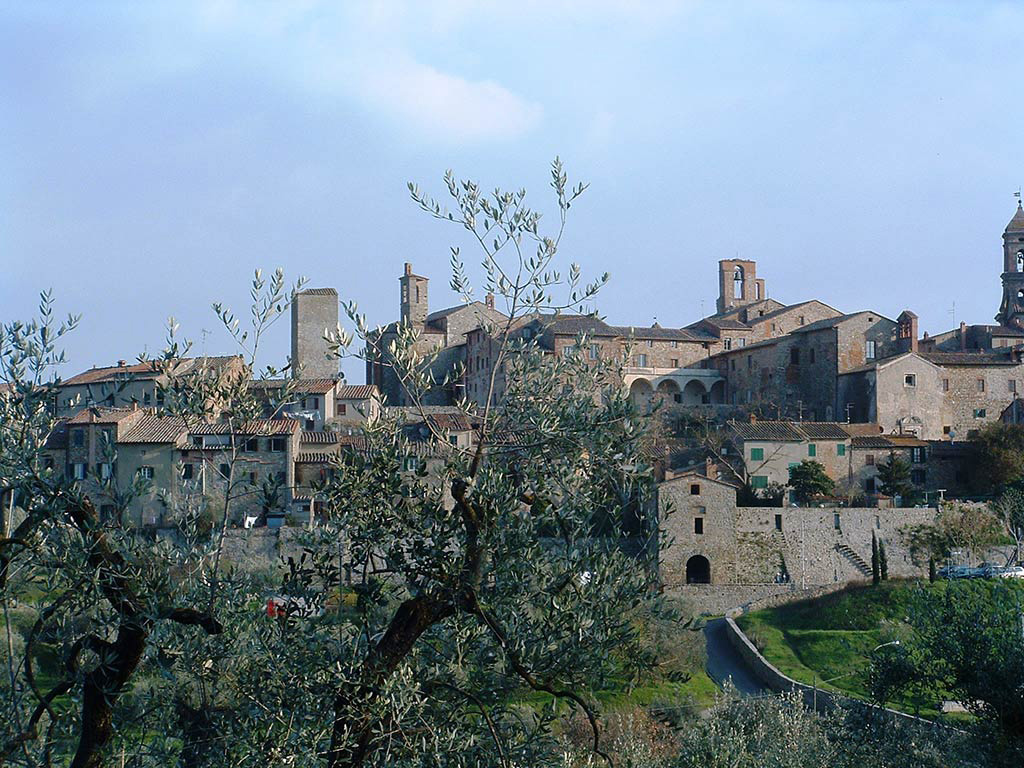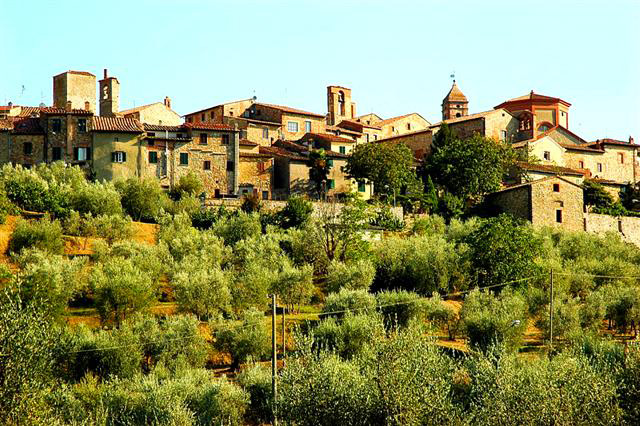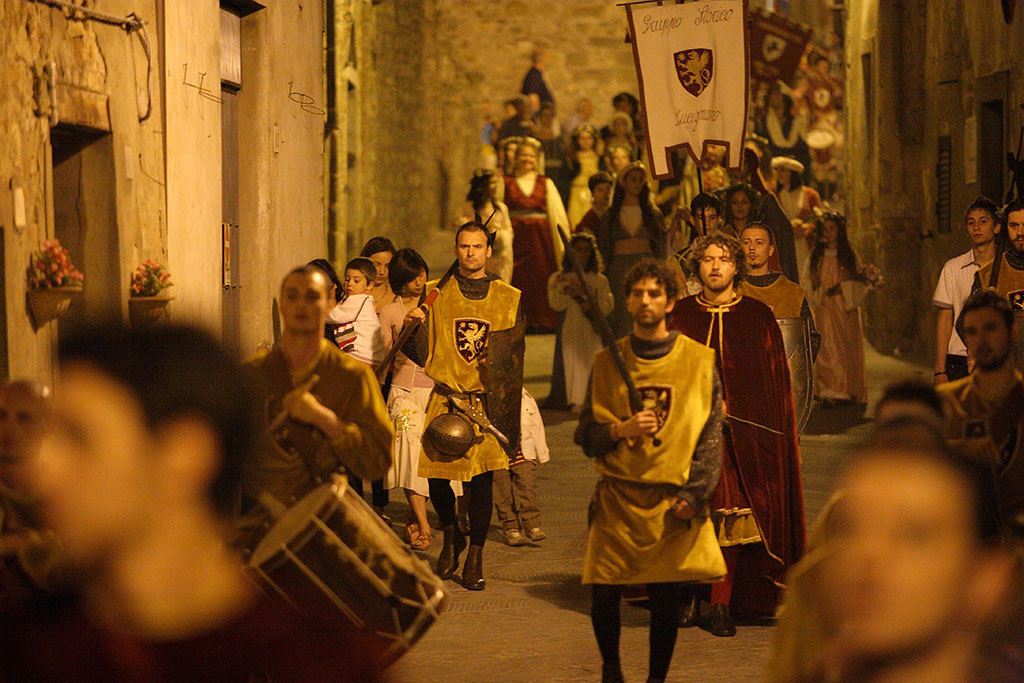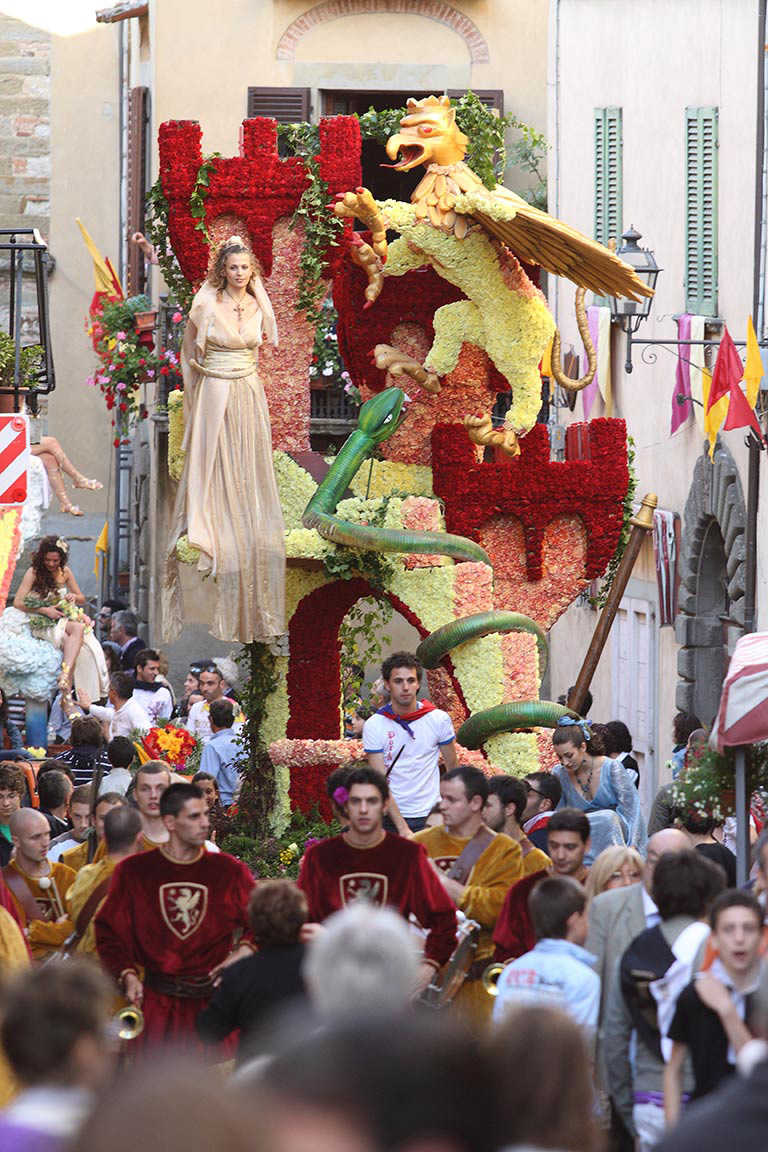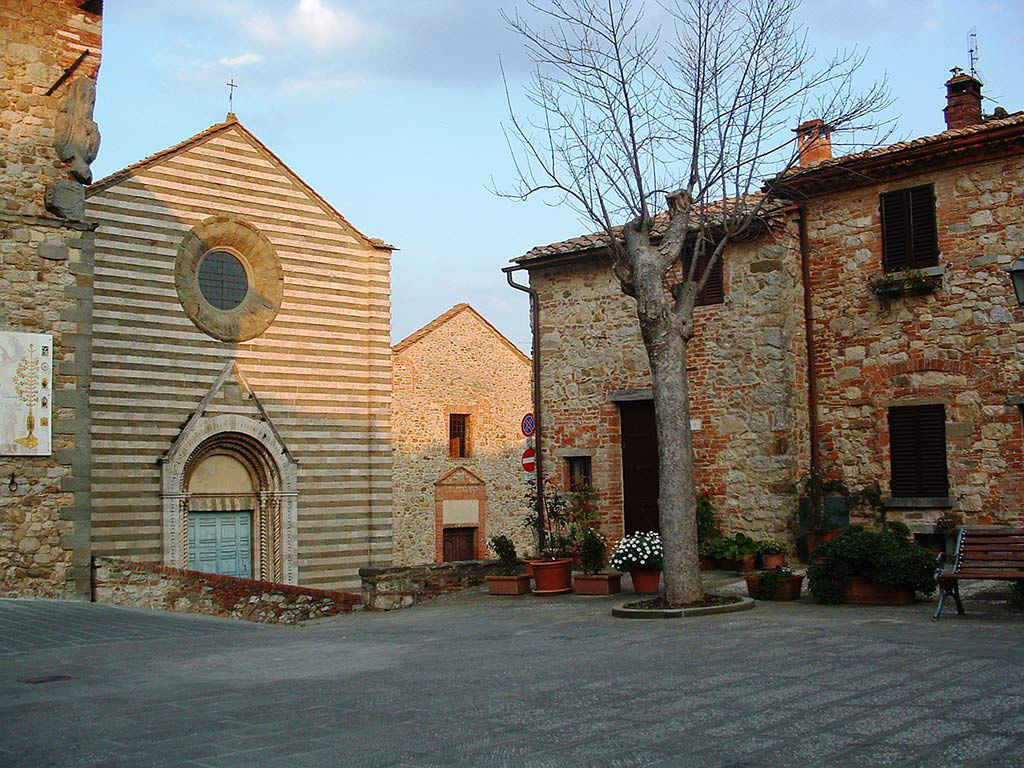Events and Folklore
The Maggiolata, the May festival which more than any other distinguishes Spring in Lucignano, takes place on the last two Sundays of May. The first Maggiolata was celebrated in 1937 and took place in the austere simplicity of those times, with farm carts full of Spanish broom drawn by Chianina breed oxen decorated with ribbons and red tassels. The strong appeal to the farming world was lost in the post-war period, when the Maggiolata took on the organizational complexity of modern times. At present, it consists of a parade of allegorical floats, realized by the four districts of Lucignano, completely covered with flowers and accompanied by musical bands and folkloristic groups coming from all parts of Italy and even from abroad. The ancient Commander of the Guards, who opens the historic procession with soldiers, drummers, and clarion players, announces since early morning the beginning of the parade. The carroccio [cart], symbol of the Commune of Lucignano, drawn by Chianina breed oxen, brings up the rear of the parade.
The event catalyzes the commitment and participation of a large part of the population of the town. Every year, the four districts (Porta Murata, Porta S. Giusto, Porta S. Giovanni, and Via dell’Amore) work on a theme project that involves them for many months in order to realize the most original and elegant float and win the “Golden Griffin”.
On the second Sunday, the manifestation concludes with the Battle of the Flowers, during which the floats are completely stripped and the residents throw flowers at each other, thus giving rise to an unusual and characteristic battle.
Another folkloristic appointment takes places in the month of September: Memories of the Past. This is a historic commemoration that enact scenes of the daily life of the end of the 19th century - beginning of 20th century. The last weekend of September, along the streets of the village, several artisan workshops bring back to life the trades and crafts of those times, while policemen, farmers and gentlemen in costume recreate the colorful and noisy atmosphere of the days of celebration. Jugglers, musicians and artists of various type animate every corner of the ancient village, while markets, taverns and restaurants delight us with perfumes and flavors that belong to the past.
In June the pro-loco association organizes Camminmangiando, an excursion which, starting from the village goes along country paths and leads to the Calcione Castle, that stands on north-western hills offering breathtaking views. The journey is divided into four sections, at the end of each one there is a tasting of a typical dish: cold cuts and crostini at the first stop; pasta dressed with the exquisite and forgotten sauces of our tradition at the second stop; next grilled Chianina meats. Finally, after a short rest among centuries-old ilex trees with cantucci [hard almond biscuits] and vinsanto, a shuttle bus accompanies back to the starting point those who have exhausted their energies for undertaking also the return by foot.
The night of San Lorenzo on August 10th, is celebrated with Calici di stelle, in the characteristic scenery of Piazza del Tribunale.
The Exhibition of Extemporary Painting takes place at the end of October. The theme is always Lucignano in its different aspects: the people, the monuments, the countryside with its colors and lights that give this village a particular halo of appeal and fascination.
The Fiera del Ceppo [Stump Fair] takes place on the weekend preceding Christmas. It is the occasion for promoting the typical products of our zone, from honey to sausages, from wines to extra-virgin olive oil. In this occasion the best olive oil of Lucignano is awarded and is organized the photographic contest ClickOliva.
Finally, Love signs, is a recent event that takes place at the Museum, in the Golden Tree Room, on February 14th, Saint Valentine’s Day. Lovers are invited to the Museum where a different show is organized every year.
